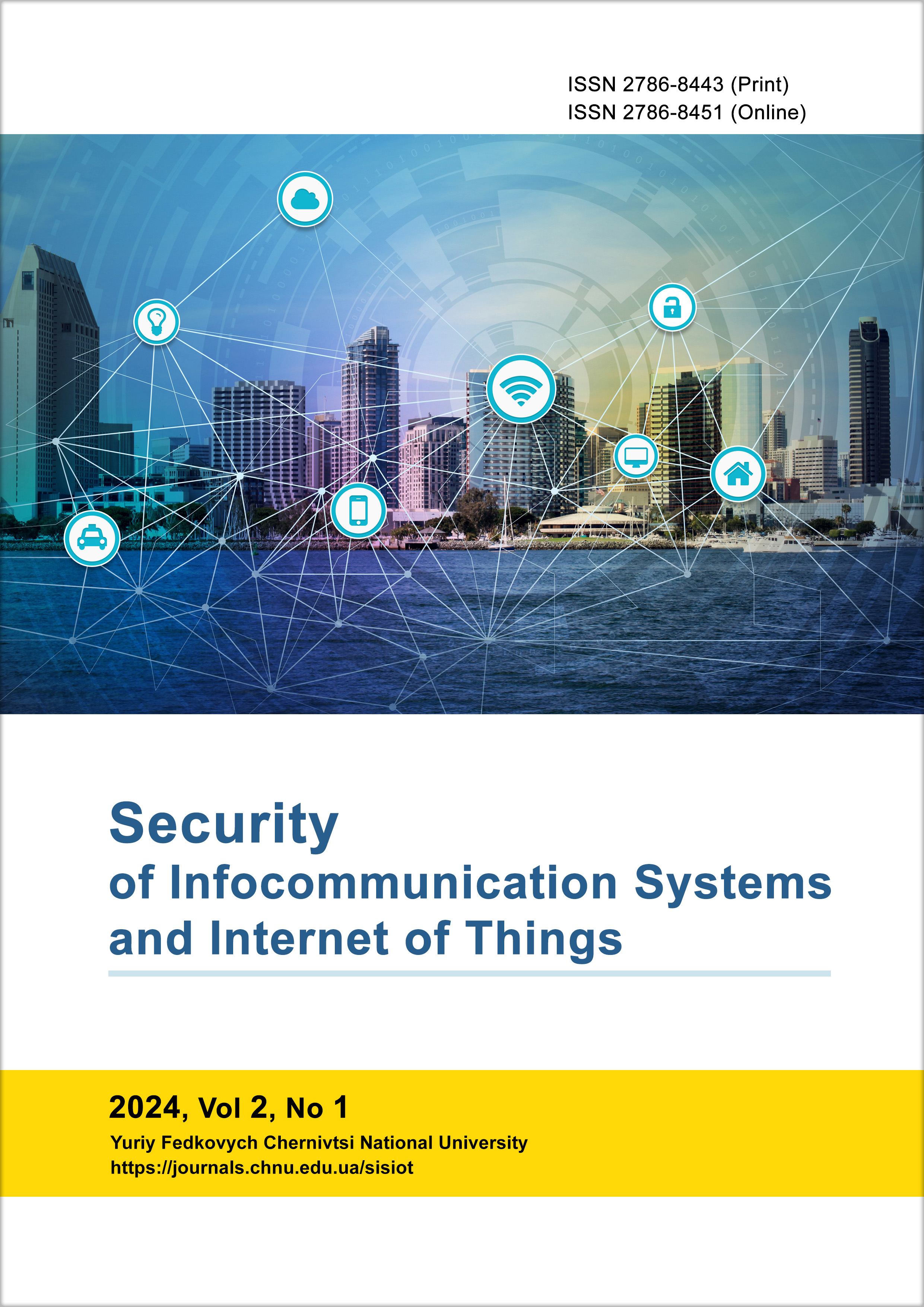Investigation of the Influence of Computation Accuracy in the Implementation of Chaotic Systems in Python for Secure Telecommunication Systems
DOI:
https://doi.org/10.31861/sisiot2024.1.01003Keywords:
visualization of chaotic models, Python, dynamic systems, chaotic systems, Chua, Lorenz and Rössler modelsAbstract
This article focuses on the use of the Python programming language to visualize chaotic models and for the investigation of the influence of initial conditions in physical systems, in particular, the Chua, Lorenz, and Rössler models. Chaotic systems are dynamic and sensitive to initial conditions, making them unpredictable as to how they will behave and react. This means that in the long run, very different outcomes can result from even small changes in initial conditions. Chaotic systems are studied in a variety of scientific fields, including physics, mathematics, biology, engineering and economics. Python, the world's most popular scientific programming language, transforms complex models into intuitive visualizations. The paper reveals the capabilities of various Python algorithms and libraries used to visualize these models, taking into account their specifics. The article focuses on three chaotic models: the Chua system, which is a universal example of a chaotic system; the Lorenz attractor, which is famous for its chaotic properties; and the Rössler rotational oscillator, which is widely used in such fields as biology, chemistry, physics, and engineering. Each model is studied in detail, its key characteristics and parameters are presented, and graphs of these models are displayed by means of Python simulation. Python, due to its ease of use and high performance, makes it possible to solve such tasks quickly and efficiently. Finally, the authors share their conclusions on the importance of initial conditions for Lorenz, Rössler and Chua systems, as well as their impact on telecommunication systems. This study provides insight into how Python, a programming language with a high level of abstraction, allows for the rapid and efficient development of complex algorithms and models needed to deal with chaotic systems. It also allows researchers and engineers to develop efficient algorithms for signal processing and control of telecommunication systems.
Downloads
References
Ovid, Metamorphoses, translated by Anthony S. Kline, 2000.
S. Strogatz, Nonlinear Dynamics and Chaos: With Applications to Physics, Biology, Chemistry, and Engineering. Westview Press, 2014.
T. N. Palmer, "Edward Lorenz (1917-2008)," Nature, vol. 453, no. 7196, pp. 583-584, 2008.
S. Katzir, "Poincaré's Relativistic Physics: Its Origins and Nature," Phys., 2005.
L. O. Chua, "The Genesis of Chua's Circuit," IEEE Transactions on Circuits and Systems I: Fundamental Theory and Applications, pp. 885-902, 1992.
E. N. Lorenz, The Essence of Chaos. University of Washington Press, 1993.
O. E. Rössler, "Chaos in Abstract Kinetics: Two Prototypes," Bulletin of Mathematical Biology, vol. 39, no. 2, pp. 275-289, 1977.
C. Letellier and V. Messager, "Influences on Otto E. Rössler's Earliest Paper on Chaos," International Journal of Bifurcation and Chaos, vol. 20, no. 11, pp. 3585-3616, 2010.
Python Documentation, "Data Types," Python 3.x Documentation, 2024.
E. N. Lorenz, "Deterministic Non-Periodic Flow," Journal of the Atmospheric Sciences, pp. 130-141, 1963.
K. Murali, V. Varadan, and H. Leung, "Secure Communication Using a Chaos-Based Signal Encryption Scheme," 2001.
L. Merah, A. Ali Pacha, N. Hadj Said, and M. Mamat, "A Pseudo Random Number Generator Based on the Chaotic System of Chua's Circuit, and Its Real-Time FPGA Implementation," 2013.
S. Dwivedi, A. Pandey, and A. Mittal, "Effect of Averaging Timescale on a Forced Lorenz Model," 2007.
P. Stamenov and T. Spassova, "A Nonlinear Oscillator Derived from the Lorenz Chaotic System," 2001.
M. T. Akter, A. Tarammim, and S. Hussen, "Chaos Control and Synchronization of Modified Lorenz System Using Active Control and Backstepping Scheme," 2023.
I. Bodale and V. A. Oancea, "Chaos Control for Willamowski–Rössler Model of Chemical Reactions," 2015.
X. Liao and P. Yu, "Chaos Control for the Family of Rössler Systems Using Feedback Controllers," 2006.
B. B. Ferreira, A. S. de Paula, and M. Savi, "Chaos Control Applied to Heart Rhythm Dynamics," 2011.
B. Saltzman, "Finite Amplitude Free Convection as an Initial Value Problem–I," 1962.
Published
Issue
Section
License
Copyright (c) 2024 Security of Infocommunication Systems and Internet of Things

This work is licensed under a Creative Commons Attribution 4.0 International License.









